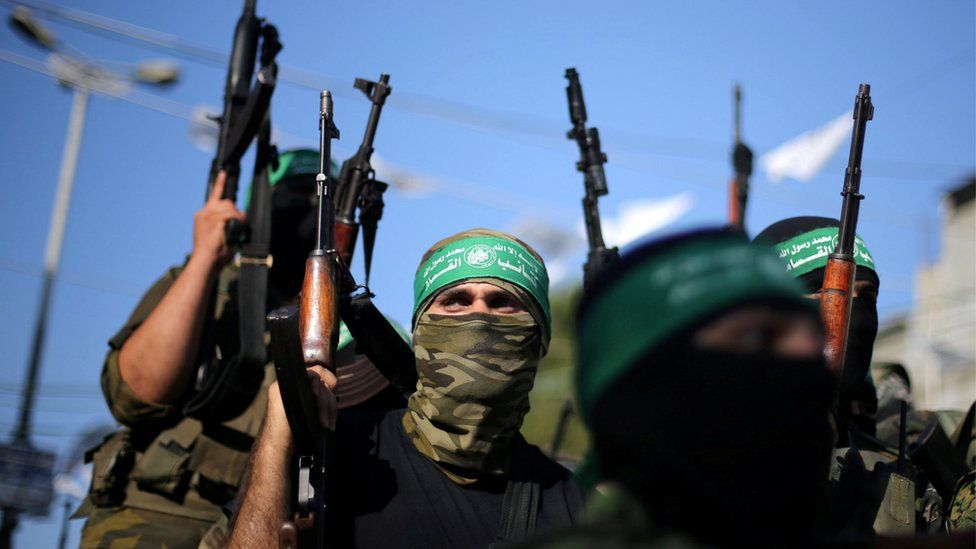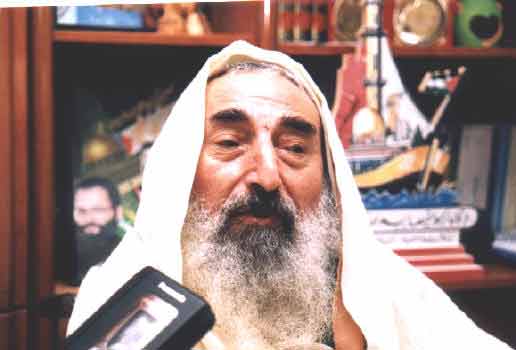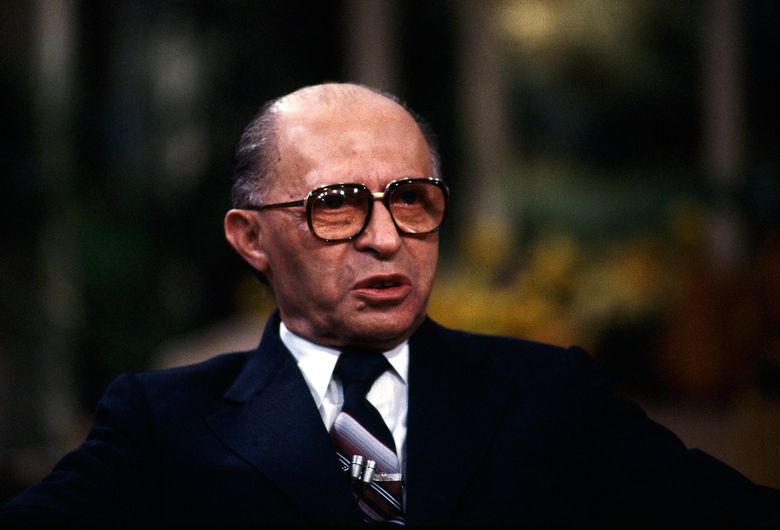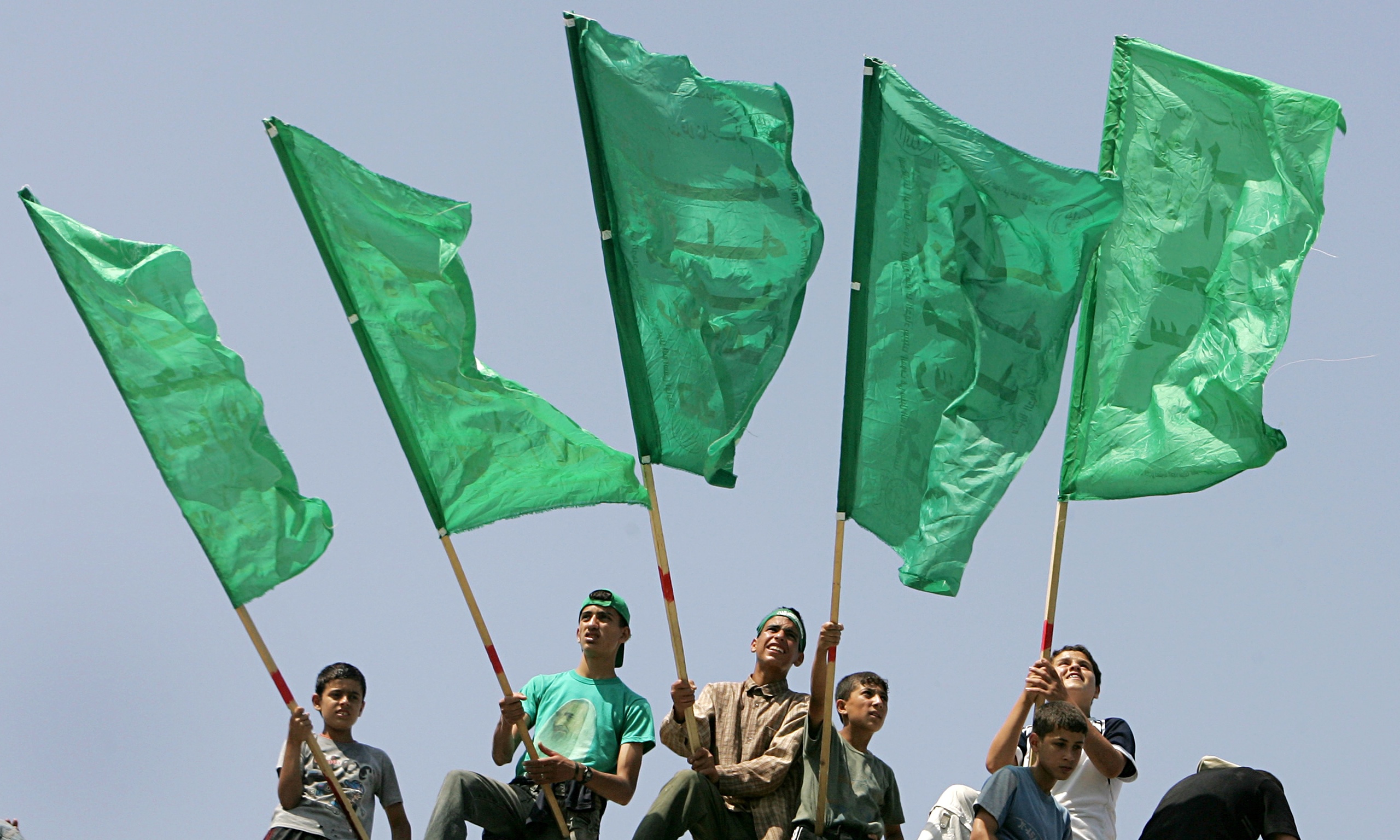
Not Many People Know that It Was Israel
That Helped Create Hamas — To Counter the PLO
Dr. Moonis Ahmar / The Express Tribune
(May 30, 2021) — Israel has declared Hamas, a Palestinian resistance organisation, a ‘terrorist’ outfit and did everything under its power to liquidate it during its recent two-week long operation in Gaza. But, not many people are aware of the fact that it was Israel which had helped the creation of Hamas as a counter to Palestinian Liberation Organization (PLO) during 1980s.
Why Israel helped the creation of Hamas and how it utilised its resources for the purpose? Has Israel by taking brutal action in Gaza strengthened Hamas and how the Palestinian struggle got divided and weakened when Hamas challenged PLO, a secular and nationalist organisation?
Formed in 1964, PLO had a clause, in its charter, calling for the destruction of Israel. But when the Oslo process was launched for peace between Israel and PLO, that clause was removed from the Palestinian charter, granting recognition to the Jewish state.
Likewise, the Israeli government in late 1980s and early 1990s lifted ban on maintaining contacts with PLO and recognised it when the historic PLO-Israeli accord, mediated by then US President Bill Clinton, signed on September 13, 1993. If PLO recognised Israel, Hamas opposed peace process with the Jewish state and called for the destruction of Israel.
Gaza, which was occupied by Israel as a result of June 1967 Arab-Israeli war, patronised Mujama al-Islamiya which was formed by a Palestinian cleric Sheikh Ahmed Yasin and viewed it as a harmless organisation involved in charity and welfare work for the Palestinian community of Gaza.
Mujama al-Islamiya later became Hamas before Intifada-I was launched in December 1987. Israel considered Mujama al-Islamiya and its successor organisation Hamas a lesser evil as compared to PLO and thought that dividing Palestinians will serve the interest of Jewish state. If Israel termed PLO a terrorist organisation and a major threat to its interests, Hamas was also against PLO because of its secular and nationalist outlook.
That is how both Hamas and Israel were viewed as natural allies against PLO. But, later on when Hamas in 1988 killed two Israeli Defense Forces (IDF) personnel in Gaza, Israel turned against Hamas but it was too late. Hamas, which earlier labeled itself as a welfare and charity organisation in Gaza and got favors from Israel, changed is tactics and exploited PLO’s peace process with Israel to gain popular support of those Palestinians who were disillusioned with Yasser Arafat’s mending of fences with the Jewish state despite the killing of hundreds of Palestinians in Intifada-I.
Regrets among those Israeli officials who helped the creation of Hamas are well documented. For instance, Avner Cohen, a Tunisia-born Jew who was an Israeli official in Gaza dealing with religious affairs during 1970s and 1980s, lamented that “Hamas, to my great regret, is Israel’s creation”. He observed the Islamist movement take shape, muscle aside secular Palestinian rivals and then evolved into what is today Hamas — a militant group that now calls for Israel’s destruction.
Cohen argued that “instead of trying to curb Gaza’s Islamists from the outset, Israel for years tolerated and, in some cases, encouraged them as a counterweight to the secular nationalists of the Palestine Liberation Organization and its dominant faction, Yasser Arafat’s Fatah.

Sheikh Ahmed Yassin
Israel cooperated with a crippled, half-blind cleric named Sheikh Ahmed Yassin, even as he was laying the foundations for what would become Hamas”. Does it mean that Hamas was clever enough to dodge shrewd Israeli intelligence service by portraying itself as a welfare and charity organisation in order to get itself establish in Gaza and then confront Israel?
Between June 1967 and 2005, Gaza was administered by the Israeli military. In 2005, Israel withdrew from Gaza but when Hamas gained control of that Palestinian enclave in 2007, it imposed a land, air and sea blockade of that territory.
How Israel helped the creation of Hamas is narrated by Andrew Higgins, an Israeli official who had worked in Gaza in the 1980s. In an interview with The Wall Street Journal in 2009, he stated, “When I look back at the chain of events I think we made a mistake but, at the time, nobody thought about the possible results. Israel’s military-led administration in Gaza looked favorably on the paraplegic cleric, who set up a wide network of schools, clinics, a library and kindergartens.
Sheikh Yassin formed the Islamist group Mujama al-Islamiya, which was officially recognized by Israel as a charity and then, in 1979, as an association. Israel also endorsed the establishment of the Islamic University of Gaza, which it now regards as a hotbed of militancy. The university was one of the first targets hit by Israeli warplanes in the 2008-9 Operation.
Yassin’s Mujama would become Hamas, which, it can be argued, was Israel’s Taliban: an Islamist group whose antecedents had been laid down by the West in a battle against a leftist enemy. Israel jailed Yassin in 1984 on a 12-year sentence after the discovery of hidden arms caches, but he was released a year later.”
The same Sheikh Yasin who was patronised by Israel against PLO was killed in an Israeli air strike in 2004. By that time, Hamas had emerged as a powerful militant organisation wresting the control of Gaza from PLO and proclaiming itself as an Islamist organisation urging Gazans to follow Sharia, particularly imposing Hijab as a dress code for women.

Israeli Prime Ministers Manahan Begin
Was it the short-sightedness of Israeli Prime Ministers Manahan Begin and Yitzhak Rabin that they couldn’t understand the real motives of Hamas as it turned out to be more dangerous than the PLO? Clashes between secular PLO and Islamist Hamas became common in Gaza — a source of satisfaction for Israel, which wanted to see Palestinian infighting.
Brig. General Shalom Harari, then a military intelligence officer in Gaza, says he received a call from Israeli soldiers manning a checkpoint on the road out of Gaza. They had stopped a bus carrying Islamic activists who wanted to join the battle against Fatah at Birzeit. “I said: ‘If they want to burn each other let them go’,” recalls Harari. Israeli military thinking during the time figured it would be great if the Islamists and socialists were to continue fighting each other since it would take away their focus on fighting Israel.
Furthermore, Brig General Yitzhak Segev, who was the Israeli military governor in Gaza in the early 1980s, told a New York Times reporter that he had helped finance the Palestinian Islamist movement as a “counterweight to the secularists and leftists of the Palestine Liberation Organization and the Fatah party, led by Yasser Arafat (who himself referred to Hamas as ‘a creature of Israel’).”
General Segev even admitted to funding Hamas himself with Israeli taxpayers’ money that was later used to kill the same people who were funding them.
One can draw two conclusions from the above discussion. One, it was purely in the Israeli interest to support and patronise first Mujama al-Islamiya and then Hamas. It also means that like the US — which created and nourished various Jihadi groups in Afghanistan and elsewhere — Israel cannot escape from the responsibility of creating Hamas.
Two, Hamas’ rise and surge in 1990s and thereafter the weakening of PLO and the Palestinian community strengthened Israeli occupation over West Bank and the blockade of Gaza. Hence the perpetual ordeals of Palestinians.
